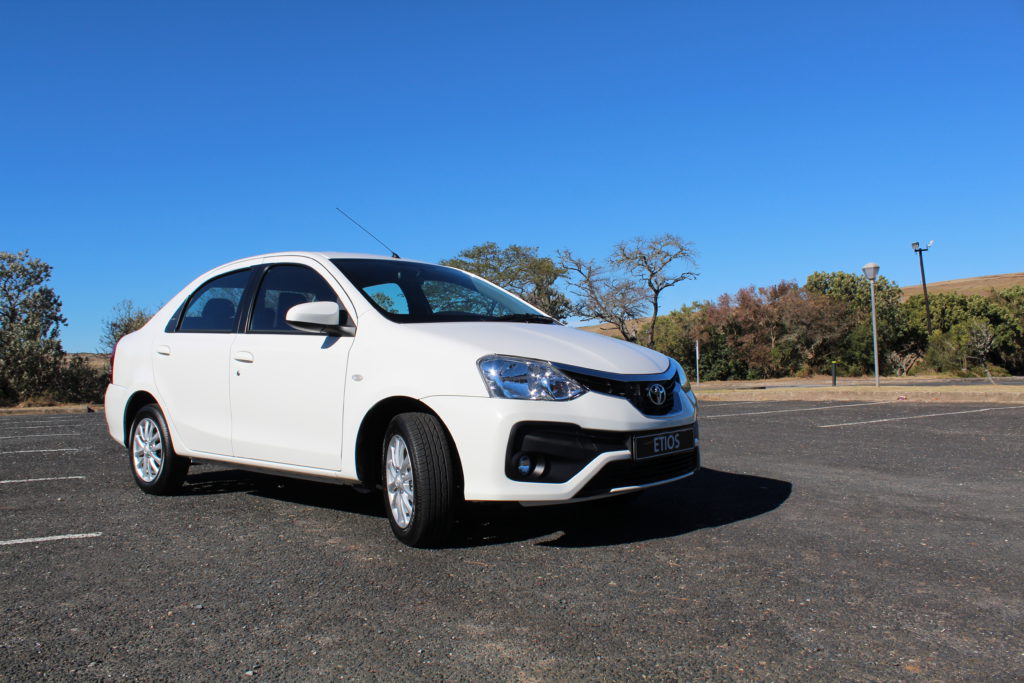So, a little personal history. During the eighteen months it took me to go from having a learners to a drivers, I had made use of four different cars on my way to becoming the competent and law-abiding motorist that I claim to be. The range was wide, from my sister’s Tata Indica (no direction to go but up, I suppose) to my mother’s VW Tiguan (and that magnificent automatic handbrake), and the two Toyota’s of my driving instructors, one I drove my test in being the hatchback version of today’s test car even though it was not a driving experience that I remember.
The Sprint edition of the Toyota Etios is more spiritual upliftment than it is physical. The headline of this car really is its new façade, sporting new front and back bumpers that mean to accentuate the badges, and add some definitive curvature to those lines. It is an improvement from the original, but it smells of a restrained approach to the design, which is a shame looking at the Japanese manufacturer’s recent additions to its lineup.
But the visuals of this sedan are not important to the demographic that turns out in solid numbers to buy it. Commercial and civil South Africa adore this car, as exemplified by the many we see adorning government crests and taxi lamps. Priced at R182 300, it competes with the likes of the Volkswagen Polo Vivo and Ford Figo. Pitted against these competitors, the advantage of the Etios lies in its list of standard features, which include all-round electric windows, front and rear fog lamps, and Bluetooth and USB connectivity (safety is covered by your typical dual airbags, ABS and EBD). The Etios also comes standard with a service plan, which is a noticeable absence from the Polo Vivo. All those interior features are wrapped up in a cabin which, though has come a very long way in build quality (17-year old me nods frantically), remains a landscape of hard, grey plastics topped with an HUD that somehow survived the turn of the century. Redemption comes in the form of comfortable seats, surprisingly good sound insulation, and the rear. The whole rear of this car serves as the explanation for its popularity as an urban ferry. Even with the front seats as far back as possible, leg space remains generous for three adults, with an appropriate amount of headroom to boot. The boot meanwhile can only be described as vast, measuring 595 litres, by far the biggest in its segment. And to top it, there’s a full spare tire under that warehouse of a luggage space. Not bad at all back here, Toyota.
An unchanged aspect since the model’s debut five years ago, the Etios uses a 1,5-liter four-cylinder, naturally-aspirated petrol engine, producing 66 kW and 132 Nm of torque. This engine does good by the car it inhibits. Acceleration is peppy and it doesn’t take a foot stomping to get it going. And though this car belongs more in the city it does a surprisingly good job on the highway, staying up at one-twenty with relative ease. What is not a relative ease is the gearbox. The five-speed manual behaves well when it gets to a cruising speed but is very clunky at the start of the journey. Though to be fair, it has very light steering for going around those corners around town.
This is not the car I drove to get my license. This is also not a car that I myself would buy. But the tradeoffs are worthwhile to the right potential buyer. The major selling point of this car being its practicalities, which remain one of Toyota’s biggest selling points. In conclusion, the Etios Sprint is a utility vehicle for human cargo and for that it’s pretty decent.


